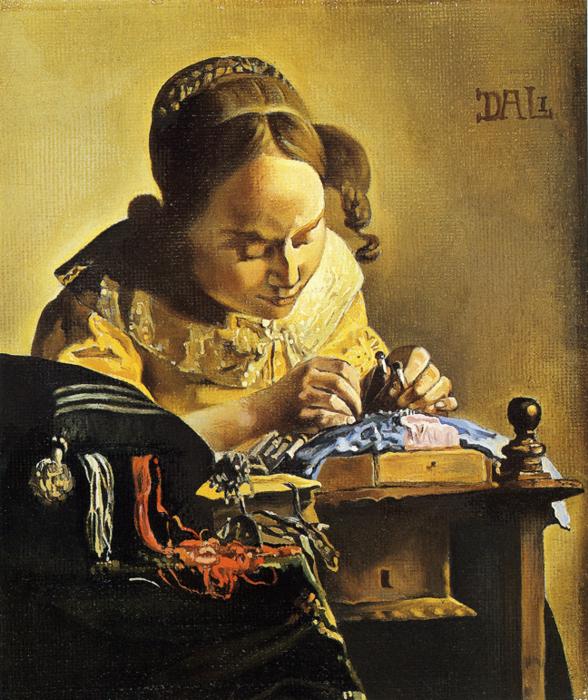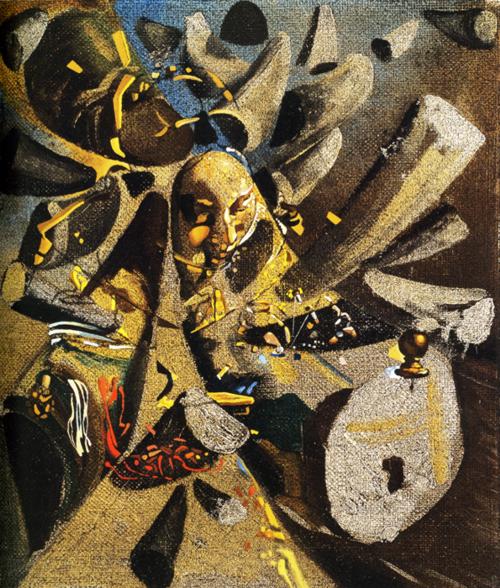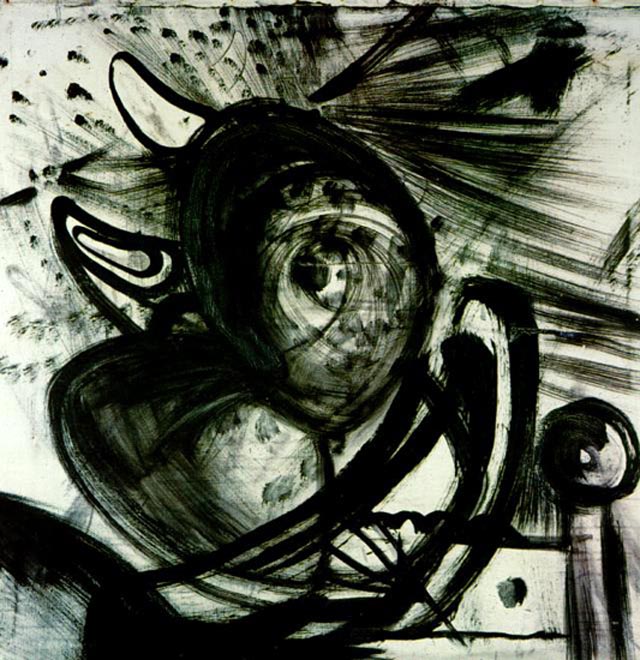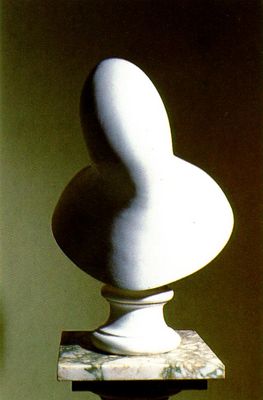|
The Lacemaker (after Vermeer) 1954-1955, by Salvador Dali
Oil on canvas. 23.5 x 19.7 cm. The Metropolitan Museum of Art, New York, USA.
How, in the space of a paragraph or two, to describe the Salvador Dali (5/11/04 – 1/23/89) interpretations of Vermeer’s Lacemaker? It is a thankless task, but let me try. A copy of the original had hung in his father’s study, and his obsession with the painting showed up as early as 1928 in the 16 minute silent surrealist film, “An Andalusian Dog”. It is the image in the book the "wife" is reading. Jump to the 1950’s, and Dali is in the midst of his ‘atomic’ period, seeking a melding of science and religion to prove the existence of God. He asserted, for example, that the Virgin Mary called on the annihilation energy of anti-protons to ascend to heaven. As a physicist, I can assure you that his ‘atomic’ period ideas don’t pass the critical laugh test, but they do seems to have stimulated his thoughts on geometry. The rhinoceros horn is in the form of a logarithmic spiral, a biologically recognized pattern controlled by different growth rates in various parts of the horn. In the rhino this results in a curved horn. In a narwhal, it is more of a candy-cane spiral; Dali uses both forms in his work. He said that he adopted the logarithmic spiral the same way that Leonardo adopted the egg shape, Ingres spheres and Cézanne, cubes and cylinders. He discusses the concept in his book, “50 Secrets of Magic Craftsmanship” written in 1948, and assets that he ‘discovered’ the ubiquity of the rhinoceros horn on July 5, 1952. This implies that every image can be decomposed into logarithmic spirals. Be patient, this will all come together in the next paragraph.
Dali copied the Lacemaker for collector Robert Lehman, who asked him to do it because he couldn’t get his own original Vermeer. Note the rather liquid, typically Dalic treatment of the blue cloth on the lace pillow - quite an exaggeration over the original. Her face is definitely harder in this work, maybe a bit devilish? The work is dated 1954-1955, which is a bit puzzling. In 1955 Dali asked permission of the Louvre to study the original painting and at that time he did the deconstruction of the image into rhinoceros horns, and several other works. It isn’t clear if the Lehman copy was painted or perhaps started before that event. Whatever the origin, Dali reproduced the Lacemaker in various forms 50 times. He said about the work, “Up until now, the Lacemaker has always been considered a very peaceful, very calm painting, but for me, it is possessed by the most violent aesthetic power, to which only the recently discovered antiproton can be compared.” He then proceeds to elevate the rhinoceros and the Lacemaker to an image of divine chastity, not unlike the association of the unicorn with the Virgin Mary. Let’s forgo the discussion of the sexual aspects of all of this, which people sometimes get into. You can see parts of his unfinished film with Robert Descharnes, “The Prodigious Adventure of the Lacemaker and the Rhinoceros”, 1954-1962, on Utube at: https://www.youtube.com/watch?v=WbhzowNipuk. As you watch it, keep in mind his quote “…the first time I saw a photograph of the Lacemaker and a live rhinoceros together (the first time??? - lsw), I realized that if there should be a battle, the Lacemaker would win, because the Lacemaker is morphologically a rhinoceros horn.”
I don't know what became of all the other works based on the Lacemaker, but three of the better known ones are shown below the Lehman copy.
Left: The Paranoiac-Critical Study of Vermeer's Lacemaker, by Salvador Dali. 1955. Oil on canvas. 27.1 x 22 1 cm. The Solomon R. Guggenheim Museum, New York, NY, USA. Painted at the Paris zoo.
Middle: Rhinocerotic Portrait of Vermeer’s “Lacemaker”, by Salvador Dali. 1955. Private collection.
Right: Rhinocerotic Bust of Vermeer’s “Lacemaker”, by Salvador Dali. 1955. Patinated plaster, private collection. I think this is a really nice piece, rhino horns or not.
In conclusion, I don’t think that Vermeer has anything to worry about.
first posted 1/31/2009
|



